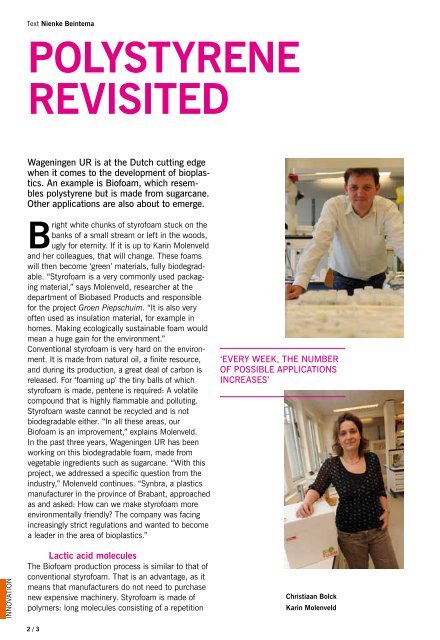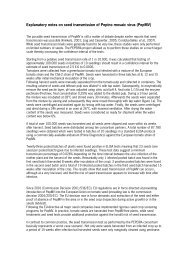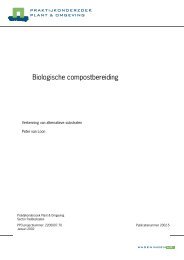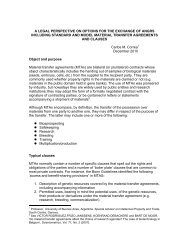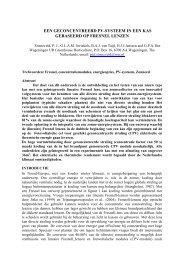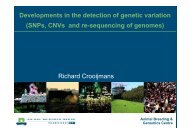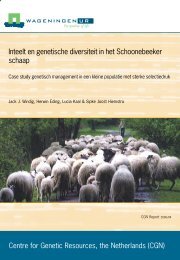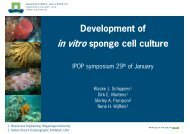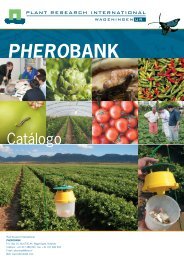wageningenupdate - Wageningen UR
wageningenupdate - Wageningen UR
wageningenupdate - Wageningen UR
Create successful ePaper yourself
Turn your PDF publications into a flip-book with our unique Google optimized e-Paper software.
Text Nienke Beintema<br />
Polystyrene<br />
revisited<br />
<strong>Wageningen</strong> <strong>UR</strong> is at the Dutch cutting edge<br />
when it comes to the development of bioplastics.<br />
An example is Biofoam, which resembles<br />
polystyrene but is made from sugarcane.<br />
Other applications are also about to emerge.<br />
INNOVATION<br />
Bright white chunks of styrofoam stuck on the<br />
banks of a small stream or left in the woods,<br />
ugly for eternity. If it is up to Karin Molenveld<br />
and her colleagues, that will change. These foams<br />
will then become ‘green’ materials, fully biodegradable.<br />
“Styrofoam is a very commonly used packaging<br />
material,” says Molenveld, researcher at the<br />
department of Biobased Products and responsible<br />
for the project Groen Piepschuim. “It is also very<br />
often used as insulation material, for example in<br />
homes. Making ecologically sustainable foam would<br />
mean a huge gain for the environment.”<br />
Conventional styrofoam is very hard on the environment.<br />
It is made from natural oil, a finite resource,<br />
and during its production, a great deal of carbon is<br />
released. For ‘foaming up’ the tiny balls of which<br />
styrofoam is made, pentene is required: A volatile<br />
compound that is highly flammable and polluting.<br />
Styrofoam waste cannot be recycled and is not<br />
biodegradable either. “In all these areas, our<br />
Biofoam is an improvement,” explains Molenveld.<br />
In the past three years, <strong>Wageningen</strong> <strong>UR</strong> has been<br />
working on this biodegradable foam, made from<br />
vegetable ingredients such as sugarcane. “With this<br />
project, we addressed a specific question from the<br />
industry,” Molenveld continues. “Synbra, a plastics<br />
manufacturer in the province of Brabant, approached<br />
as and asked: How can we make styrofoam more<br />
environmentally friendly? The company was facing<br />
increasingly strict regulations and wanted to become<br />
a leader in the area of bioplastics.”<br />
Lactic acid molecules<br />
The Biofoam production process is similar to that of<br />
conventional styrofoam. That is an advantage, as it<br />
means that manufacturers do not need to purchase<br />
new expensive machinery. Styrofoam is made of<br />
polymers: long molecules consisting of a repetition<br />
2 / 3<br />
‘Every week, the number<br />
of possible applications<br />
increases’<br />
Christiaan Bolck<br />
Karin Molenveld


